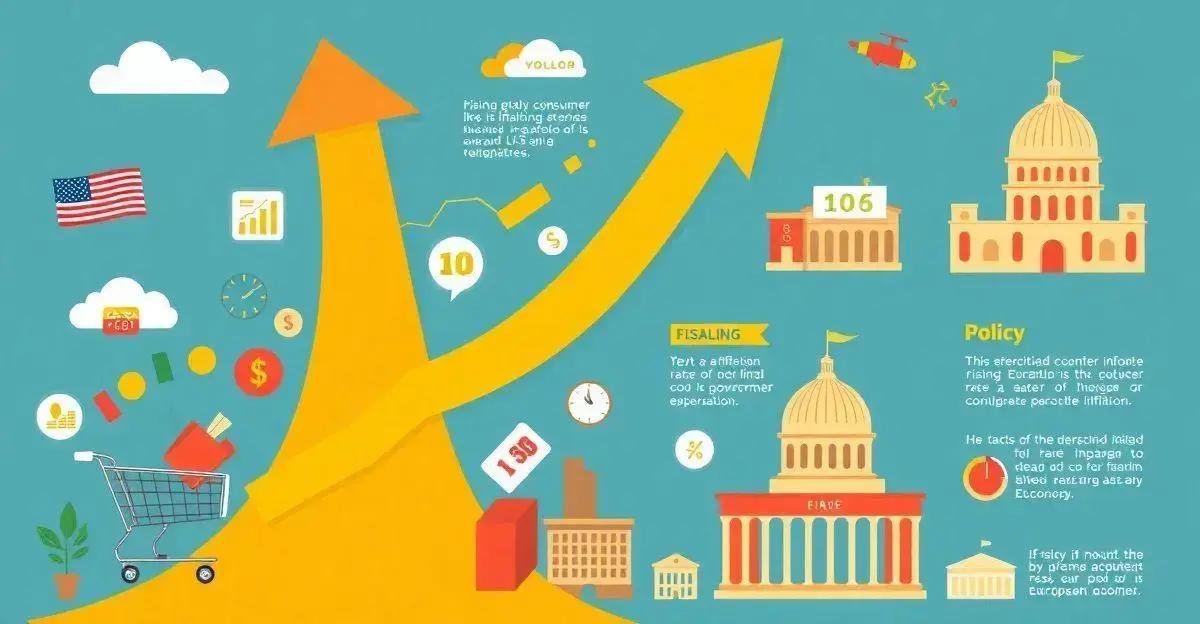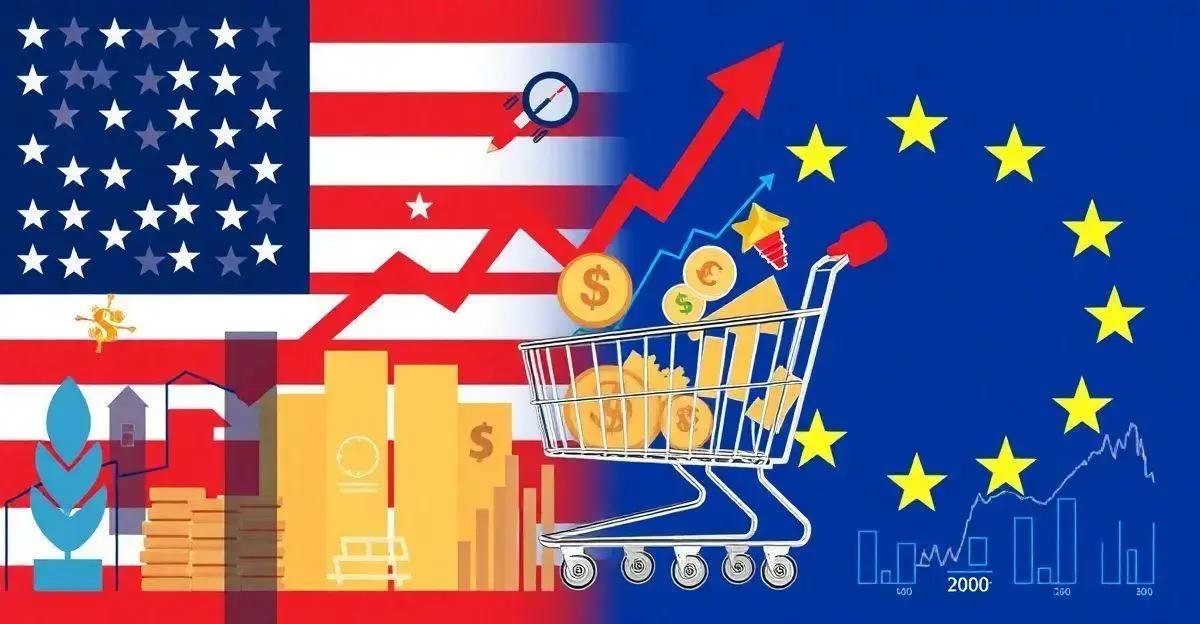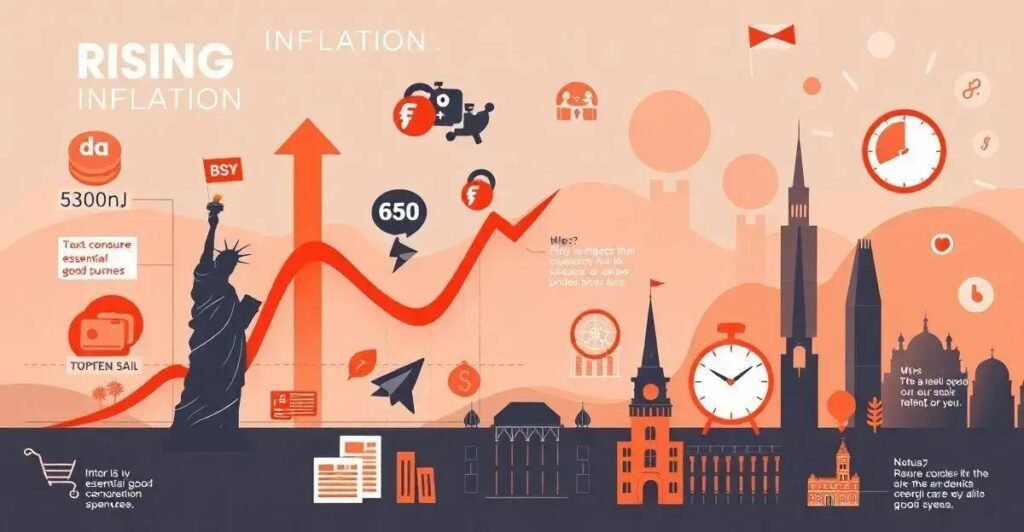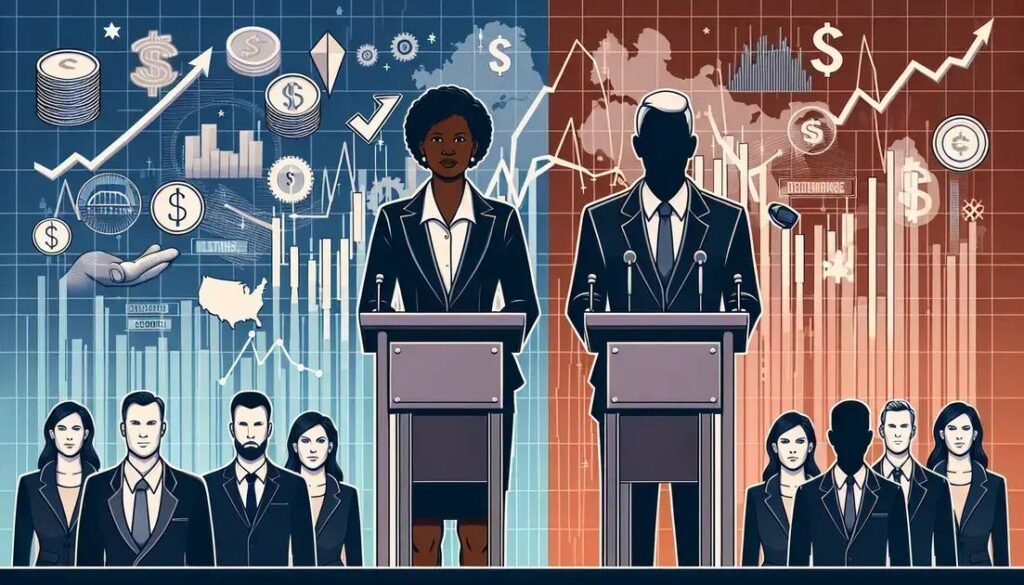Have you noticed the prices of everyday essentials increasing rapidly? You’re not alone! The Inflation rate, which measures the rate of change in prices of goods and services, is on the rise globally.
In this article, we’ll delve into the factors driving this trend and explore the implications on consumer spending, economic indicators, and policy decisions.
Inflation Rate Impact on Consumer Spending
The Inflation rate has a significant impact on consumer spending patterns. As prices rise, consumers are forced to adjust their budgets and make tough decisions about where to allocate their resources. This can lead to a reduction in discretionary spending, which can have far-reaching effects on the economy. For example, if consumers are not confident in the stability of the economy, they may be less likely to make big-ticket purchases, such as buying a new car or taking a vacation. On the other hand, when inflation is low, consumers tend to be more optimistic about the economy, which can lead to increased spending and a boost to economic growth.
Rising inflation rates can be caused by a combination of factors, including changes in supply and demand, monetary policy, and external shocks. For example, an increase in global demand for certain commodities, such as oil, can lead to a rise in prices. Similarly, a surge in consumer spending can outstrip supply, causing prices to increase. Additionally, monetary policy decisions, such as interest rate changes, can also impact inflation rates. Central banks may increase interest rates to combat inflation, which can reduce borrowing and spending, and vice versa.
Economic indicators, such as GDP growth, unemployment rates, and interest rates, all play a role in understanding the inflation rate. For instance, a strong GDP growth rate can indicate a healthy economy, which can lead to an increase in inflation rates. On the other hand, a high unemployment rate can indicate a lack of demand, which can lead to deflation. Interest rates can also impact inflation rates, as a decrease in interest rates can stimulate borrowing and spending, leading to an increase in inflation. By analyzing these economic indicators, policymakers can better understand the underlying drivers of inflation and make informed decisions about monetary policy.
Policymakers use a variety of tools to manage inflation rates, including monetary policy and fiscal policy. For example, central banks may raise interest rates to combat inflation, or implement quantitative easing to stimulate economic growth. Fiscal policymakers may also use taxation and government spending to influence inflation rates. Looking ahead, the future outlook for inflation rates is uncertain, as it depends on a variety of factors, including global economic trends, commodity prices, and technological advancements. However, by staying informed and adapting to changing circumstances, policymakers can work to maintain a stable and sustainable economy.
Causes of Rising Inflation Rate

The Inflation rate is influenced by a combination of factors, including changes in supply and demand, monetary policy, and external shocks. For instance, an increase in global demand for certain commodities, such as oil, can lead to a rise in prices. Similarly, a surge in consumer spending can outstrip supply, causing prices to increase. Additionally, monetary policy decisions, such as changes in interest rates, can also impact Inflation rates. Central banks may increase interest rates to combat Inflation, which can reduce borrowing and spending, and vice versa.
The Inflation rate has a significant impact on consumer spending patterns. As prices rise, consumers are forced to adjust their budgets and make tough decisions about where to allocate their resources. This can lead to a reduction in discretionary spending, which can have far-reaching effects on the economy. For example, if consumers are not confident in the stability of the economy, they may be less likely to make big-ticket purchases, such as buying a new car or taking a vacation. On the other hand, when Inflation is low, consumers tend to be more optimistic about the economy, which can lead to increased spending and a boost to economic growth.
Economic indicators, such as GDP growth, unemployment rates, and interest rates, all play a role in understanding the Inflation rate. For instance, a strong GDP growth rate can indicate a healthy economy, which can lead to an increase in Inflation rates. On the other hand, a high unemployment rate can indicate a lack of demand, which can lead to deflation. Interest rates can also impact Inflation rates, as a decrease in interest rates can stimulate borrowing and spending, leading to an increase in Inflation. By analyzing these economic indicators, policymakers can better understand the underlying drivers of Inflation and make informed decisions about monetary policy.
Policymakers use a variety of tools to manage the Inflation rate, including monetary policy and fiscal policy. For example, central banks may raise interest rates to combat Inflation, or implement quantitative easing to stimulate economic growth. Fiscal policymakers may also use taxation and government spending to influence Inflation rates. Looking ahead, the future outlook for Inflation rates is uncertain, as it depends on a variety of factors, including global economic trends, commodity prices, and technological advancements. However, by staying informed and adapting to changing circumstances, policymakers can work to maintain a stable and sustainable economy.
Economic Indicators and Inflation Rate
Economic indicators play a crucial role in understanding the Inflation rate. Key indicators include GDP growth, unemployment rates, and interest rates. A strong GDP growth rate can indicate a healthy economy, leading to an increase in Inflation rates. Conversely, a high unemployment rate can indicate a lack of demand, potentially leading to deflation. Interest rates can also impact Inflation rates, as a decrease in interest rates can stimulate borrowing and spending, leading to an increase in Inflation. By analyzing these economic indicators, policymakers can better understand the underlying drivers of Inflation and make informed decisions about monetary policy.
The Inflation rate has a significant impact on consumer spending patterns. As prices rise, consumers are forced to adjust their budgets and make tough decisions about where to allocate their resources. This can lead to a reduction in discretionary spending, which can have far-reaching effects on the economy. For example, if consumers are not confident in the stability of the economy, they may be less likely to make big-ticket purchases, such as buying a new car or taking a vacation. On the other hand, when Inflation is low, consumers tend to be more optimistic about the economy, which can lead to increased spending and a boost to economic growth.
The Inflation rate is influenced by a combination of factors, including changes in supply and demand, monetary policy, and external shocks. For instance, an increase in global demand for certain commodities, such as oil, can lead to a rise in prices. Similarly, a surge in consumer spending can outstrip supply, causing prices to increase. Additionally, monetary policy decisions, such as changes in interest rates, can also impact Inflation rates. Central banks may increase interest rates to combat Inflation, which can reduce borrowing and spending, and vice versa.
Policymakers use a variety of tools to manage the Inflation rate, including monetary policy and fiscal policy. For example, central banks may raise interest rates to combat Inflation, or implement quantitative easing to stimulate economic growth. Fiscal policymakers may also use taxation and government spending to influence Inflation rates. Looking ahead, the future outlook for Inflation rates is uncertain, as it depends on a variety of factors, including global economic trends, commodity prices, and technological advancements. However, by staying informed and adapting to changing circumstances, policymakers can work to maintain a stable and sustainable economy.
Inflation Rate Policy and Future Outlook

Policymakers use a variety of tools to manage the Inflation rate, including monetary policy and fiscal policy. For example, central banks may raise interest rates to combat Inflation, or implement quantitative easing to stimulate economic growth. Fiscal policymakers may also use taxation and government spending to influence Inflation rates. Looking ahead, the future outlook for Inflation rates is uncertain, as it depends on a variety of factors, including global economic trends, commodity prices, and technological advancements. However, by staying informed and adapting to changing circumstances, policymakers can work to maintain a stable and sustainable economy.
The Inflation rate has a significant impact on consumer spending patterns. As prices rise, consumers are forced to adjust their budgets and make tough decisions about where to allocate their resources. This can lead to a reduction in discretionary spending, which can have far-reaching effects on the economy. For example, if consumers are not confident in the stability of the economy, they may be less likely to make big-ticket purchases, such as buying a new car or taking a vacation. On the other hand, when Inflation is low, consumers tend to be more optimistic about the economy, which can lead to increased spending and a boost to economic growth.
The Inflation rate is influenced by a combination of factors, including changes in supply and demand, monetary policy, and external shocks. For instance, an increase in global demand for certain commodities, such as oil, can lead to a rise in prices. Similarly, a surge in consumer spending can outstrip supply, causing prices to increase. Additionally, monetary policy decisions, such as changes in interest rates, can also impact Inflation rates. Central banks may increase interest rates to combat Inflation, which can reduce borrowing and spending, and vice versa.
Economic indicators, such as GDP growth, unemployment rates, and interest rates, all play a role in understanding the Inflation rate. For instance, a strong GDP growth rate can indicate a healthy economy, which can lead to an increase in Inflation rates. On the other hand, a high unemployment rate can indicate a lack of demand, potentially leading to deflation. Interest rates can also impact Inflation rates, as a decrease in interest rates can stimulate borrowing and spending, leading to an increase in Inflation. By analyzing these economic indicators, policymakers can better understand the underlying drivers of Inflation and make informed decisions about monetary policy.
Frequently Asked Questions about Inflation
What is the impact of inflation on consumer spending?
The inflation rate has a significant impact on consumer spending patterns. As prices rise, consumers are forced to adjust their budgets and make tough decisions about where to allocate their resources. This can lead to a reduction in discretionary spending, which can have far-reaching effects on the economy.
What are the causes of rising inflation rates?
The inflation rate is influenced by a combination of factors, including changes in supply and demand, monetary policy, and external shocks. For instance, an increase in global demand for certain commodities, such as oil, can lead to a rise in prices.
How do economic indicators influence inflation rates?
Economic indicators, such as GDP growth, unemployment rates, and interest rates, all play a role in understanding the inflation rate. For instance, a strong GDP growth rate can indicate a healthy economy, which can lead to an increase in inflation rates.
What is the role of policymakers in managing inflation rates?
Policymakers use a variety of tools to manage the inflation rate, including monetary policy and fiscal policy. For example, central banks may raise interest rates to combat inflation, or implement quantitative easing to stimulate economic growth.
What is the future outlook for inflation rates?
The future outlook for inflation rates is uncertain, as it depends on a variety of factors, including global economic trends, commodity prices, and technological advancements. However, by staying informed and adapting to changing circumstances, policymakers can work to maintain a stable and sustainable economy.



